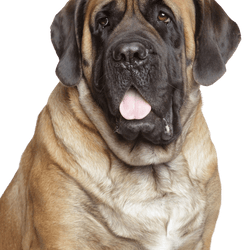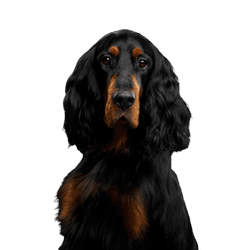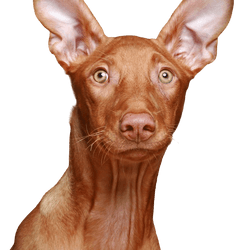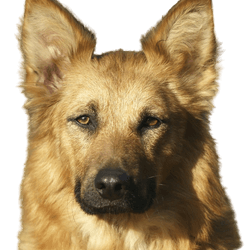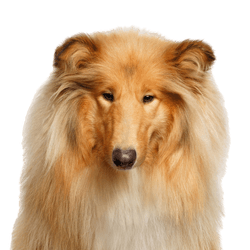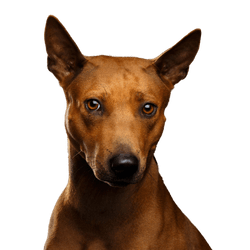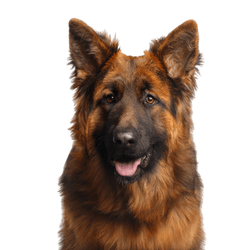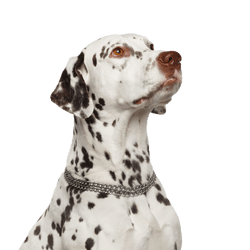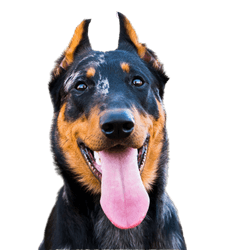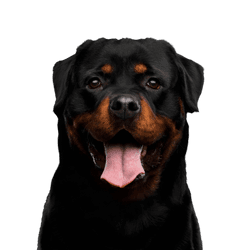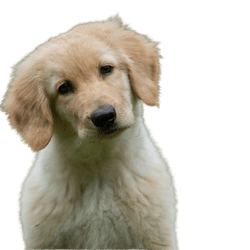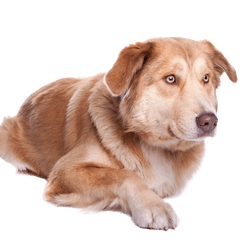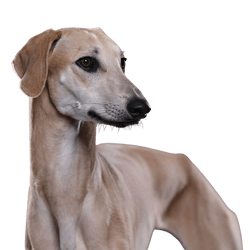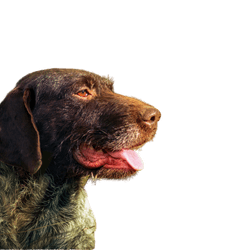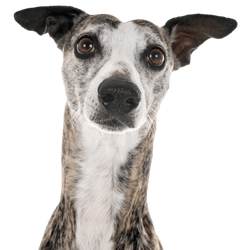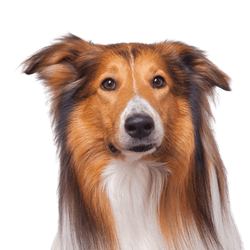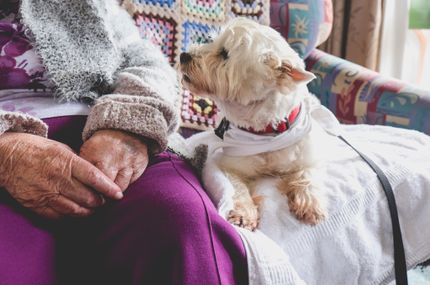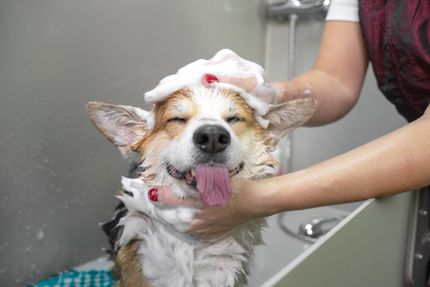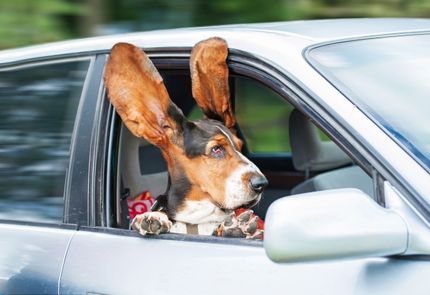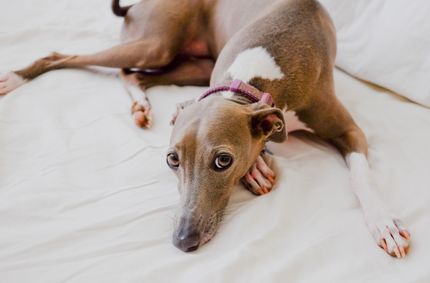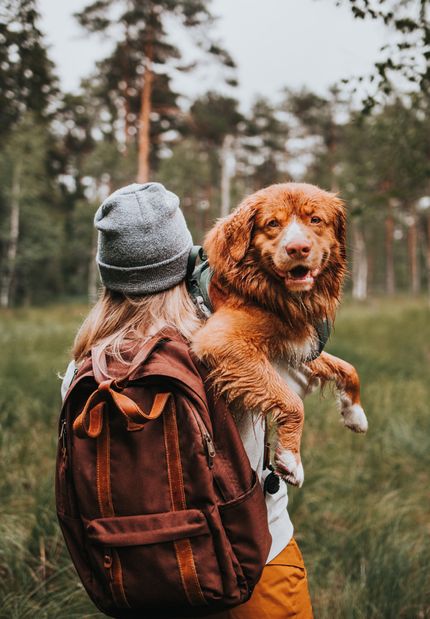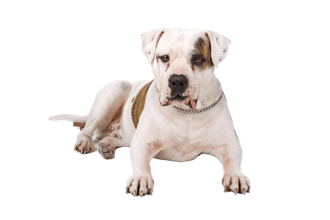
American Bulldog Breed description: Character & Co
American Bulldog
Facts & Origin
What is the origin of the American Bulldog?
The American Bulldog is a breed of dog from the USA. It stems from the family of bulldogs. The different forms are very diverse, since there are no breed standards and no supervising breeding clubs. The breed is recognised on the one hand by the UKC, an organiser of dog fights, and on the other hand by the National Kennel Club, which is not very precise concerning standards and criteria. In this case breeding freedom applies. Unfortunately there are still many dubious participants in this breeding area.
What Are the Breed Characteristics of American Bulldogs?
The FCI itself does not officially recognise the American Bulldog as a breed. This race is considered a representative of the bulldogs. Different types of the American Bulldog exist. There are the so-called
- SCOTT standard types,
- the JOHNSON Bully or Classic type
- and the hybrid type.
The latter is a cross between the first two strokes. Also the denture depends on the type. The bite of the lower jaw is more pronounced in the bully. He also typically has wrinkles underneath his eyes. The nose is black. In the USA the breed is still predominantly found in the area of wild boar hunting. Over here the American Bulldog is primarily used as a family or companion dog. His physique is medium-sized and of strong build, but it also shows a certain elegance. A similarity to the boxer can be clearly seen in parts. The American Bulldog's tail is not cropped.
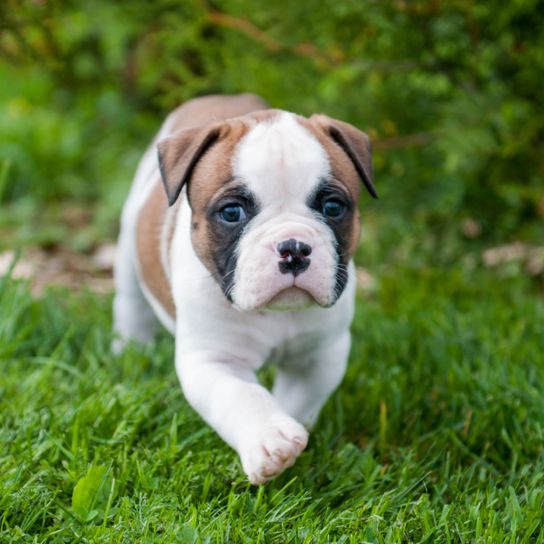
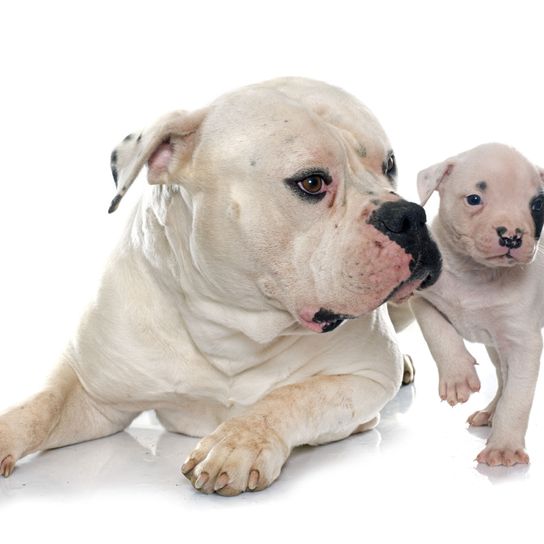
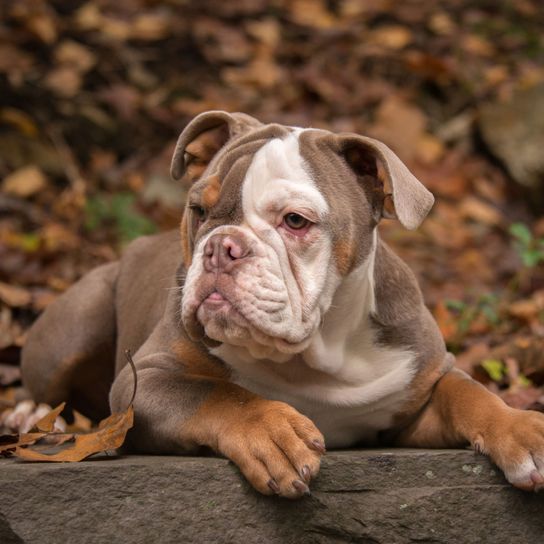
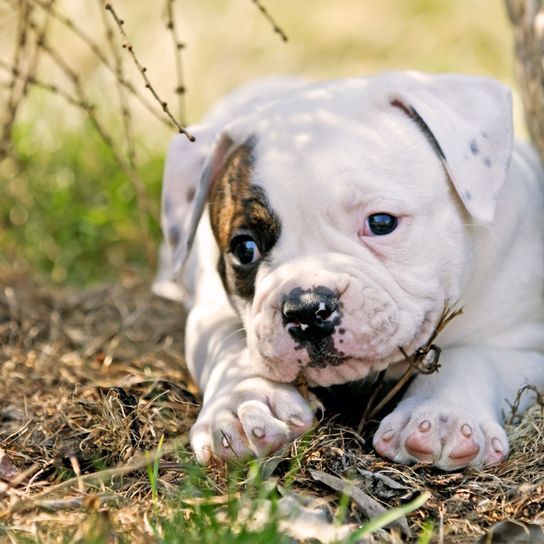
| Alternate Name | Old Country Bulldog |
| Origin | USA |
| Life expectancy | 10 - 15 years |
| Care requirements | low-maintenance |
| Activity level | average |
| FCI group | not recognised |
| AKC group | Foundation Stock Service |
| KC group | not recognised |
American Bulldog mixes
Attitude, character and temperament of the breed
What are the typical characteristics of American bulldogs?
It cannot be denied that the American Bulldog is temperamentally blessed. At the same time, however, the animals are often self-contained. They are attentive and intelligent. In addition to this the American Bulldog is strong and courageous. They are generally very people-orientated and friendly towards them. They are loyal and devoted to their owners. The breed is also very good-natured and has a high stimulus threshold. Though improperly bred and kept, the breed can also become a dangerous weapon. Concerning the keeping of this dog there is basically not much to keep in mind since the animals make few demands. However, the American Bulldog needs
- a lot of space to keep them busy.>
- A firm hand should establish the hierarchy early on.
- The training of the American Bulldog puppies should be very consistent.
- At the same time, a relationship of trust must be established.
- A certain experience in handling dogs is generally an advantage.
- A dog school should also be attended to make sure the animals learn to comply with the word of their owner.
- The animals love nature and are very bright and playful.
Character
Usage
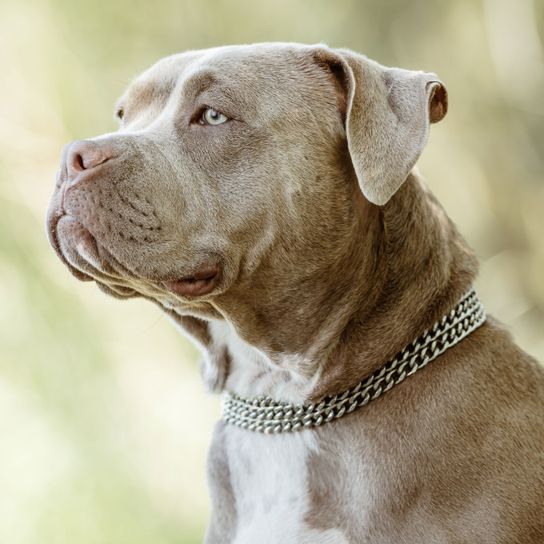
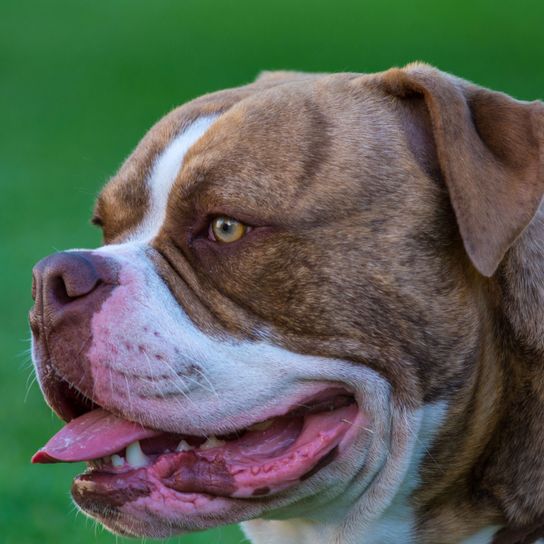

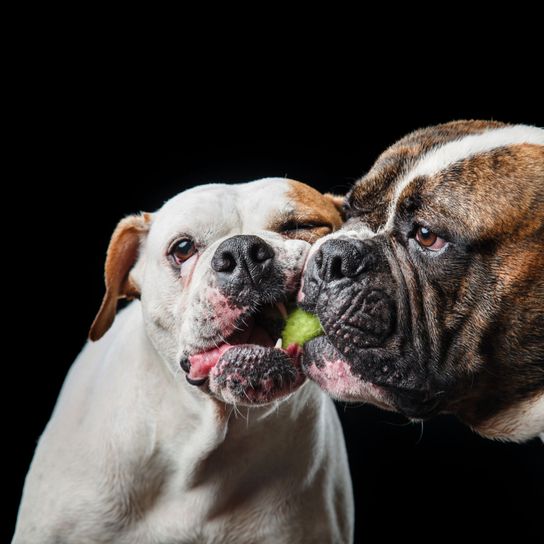

Health and breeding information
What Are Typical Diseases Of American Bulldogs?
There are relatively few diseases known in the American Bulldog. Only allergies or hearing loss are more commonly found. This is because the breed is little overbred.
What needs to be considered when breeding American Bulldogs?
In some states in Germany such as Bavaria, Hesse and NRW, the American Bulldog is considered a list dog. This means that an animal test must be carried out on the animals to determine the harmlessness for everyday “use”. A certain degree of danger is assumed since there are many dubious breeds, which is why an additional owner's license is required in Hesse. A cantonal license is also required in Switzerland. In addition, the animals have to undergo specific training. In Denmark, keeping, breeding and importing the dog is largely prohibited. Even when passing through, only short dog exits are allowed. There are many dubious breeders worldwide who earn a lot of money from breeds that produce unhealthy or character-threatening animals. If you want to buy an American Bulldog, you should inform yourself in advance about the American Bulldog breeder.


Look and coat of the American Bulldog Dog
This dog has a short, dense and shiny coat running close along their body. In terms of colour, all colour combinations are possible, except for a completely black or blue colour as well as tricolour, merle or a black mask. It is sufficient to give the coat a good brush every once in a while.
How big is the American Bulldog?
The American Bulldog is usually up to 66 cm tall. The males are usually slightly larger than the bitches. The SCOTT type is usually of a narrower build. In addition, these animals have a longer mouth. This is due to the original use for wild boar hunting.
How much does an American bulldog weigh?
The weight of the American Bulldog varies between 30 and 55 kg - depending on the actual body size and the sex of the animal.
How old does an American bulldog get?
Since there are many different breeds, it is difficult to determine an approximate age.
| Fur length | short |
| Fur | flat coated |
| Ear shape | Tilt-ear |
| Tail | lang |
| Anatomy | muscular, strong |
| Size ♀ | 51 - 61 cm |
| Weight ♀ | 27 - 41 kg |
| Size ♂ | 51 - 71 cm |
| Weight ♂ | 30 - 58 kg |
| Suitable For | - |
Colors

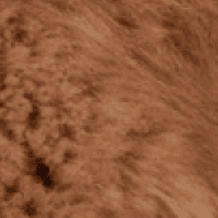

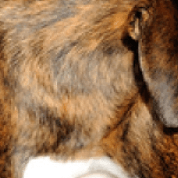

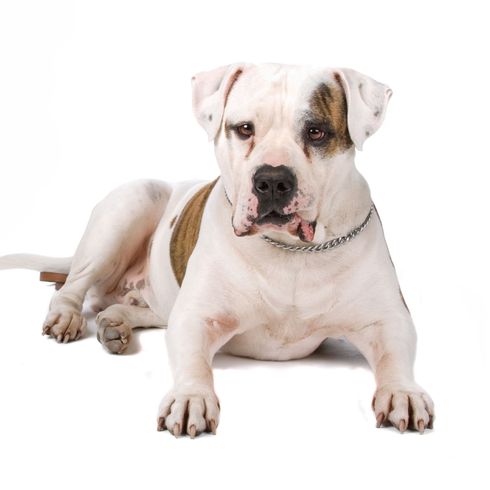

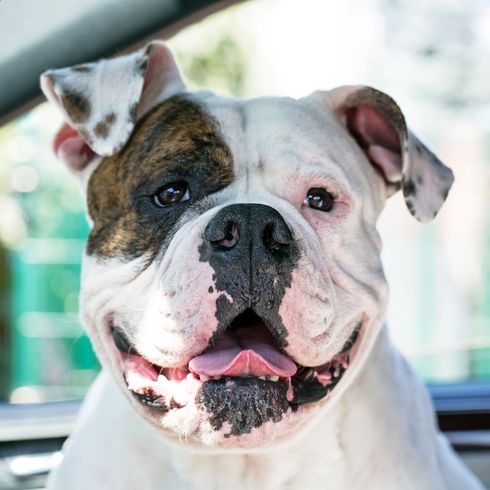
FAQ
-
Yes, in some German states like Bavaria, Hesse and NRW the American Bulldog is a listed dog.
-
The American Bulldog has a typical bulldog head shape and is medium to large in size. A wide mouth and very short, smooth coat. They are often seen with cropped ears and tail. However, this is forbidden. The coloring is very variable and can range from blue to white.
-
It costs in any case with serious breeding over 1000 euros. Special lines and blue bulldogs usually cost around 1500-2500 euros.
-
Spike is an American Bulldog and comes from the "Tom and Jerry" series universe. It was a short-lived animated series in the drama genre and Spike was the counterpart to Tyke.
-
On average, a dog needs two years to be fully grown. For about 1 year he grows in height and then only in musculature and "width".
Sources and relevant links
United Kennel Club
Accessed on 05.01.2023
American Kennel Club
Accessed on 10.01.2023
Gabriele Lehari (2004). Ulmers Großes Lexikon der Hunderassen. Ulmer.
Horst Hegewald-Kawich (2015). Hunderassen von A bis Z: Über 200 beliebte Rassen aus aller Welt. Gräfe und Unzer Verlag.
Other large dogs
Useful Articles
You can find articles that might interest you in the dogbible blog to match your favorite breed.
Visit our magazineto stay up to date on dog trends.
To find out more, view our Privacy Policy
Find here the breed that suits you and find out what character traits it has. Here you can also learn more about the origin, size and weight of your favorite breeds.
Matching your favorite breed, you'll find articles that might interest you on the dogbible dog blog.
14 foods that are toxic for dogs
Rabies in dogs - rabies vaccination and signs that your dog is affected
Keep your eyes open when buying a puppy





